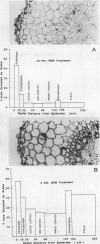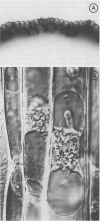Abstract
The relative transport capabilities of the cells of the root periphery and cortex were investigated using a variety of experimental techniques. Brief (30 seconds to 1 minute) exposures with the penetrating sulfhydryl reagent, N-ethyl maleimide (NEM), and the impermeant reagent, p-chloromercuribenzene sulfonic acid (PCMBS), dramatically reduced 86Rb+ (0.2 millimolar RbCl) uptake into 2 centimeter corn (Zea mays [A632 × (C3640 × Oh43)]) root segments. Autoradiographic localization studies with [3H]NEM and [203Hg]PCMBS demonstrated that, during short term exposures with either reagent, sulfhydryl binding occurred almost exclusively in the cells of the root periphery.
Corn root cortical protoplasts were isolated, and exhibited significant K+(86Rb+) influx. The kinetics for K+ uptake were studied; the influx isotherms were smooth, nonsaturating curves that approached linearity at higher K+(Rb+) concentrations (above 1 millimolar K+). These kinetics were identical in shape to the complex kinetics previously observed for K+ uptake in corn roots (Kochian, Lucas 1982 Plant Physiol 70: 1723-1731), and could be resolved into a saturable and a first order kinetic component.
The existence of a hypodermal apoplastic barrier was investigated. The apoplastic, cell wall binding dye, Calcofluor White M2R, appeared to be excluded from the cortex by the hypodermis. However, experiments with damaged roots indicated that this result may be an artifact resulting from the binding of dye to the epidermal cell walls. Furthermore, [203Hg] PCMBS autoradiography demonstrated that the hypodermis was not a barrier to apoplastic movement of PCMBS.
These results suggest that although cortical cells possess the capacity to absorb ions, K+ influx at low concentrations is limited to the root periphery. Cortical cell uptake appears to be repressed under these conditions. At higher concentrations, cortical cells may function to absorb K+. Such a model may involve regulation of cortical cell ion transport capacity.
Full text
PDF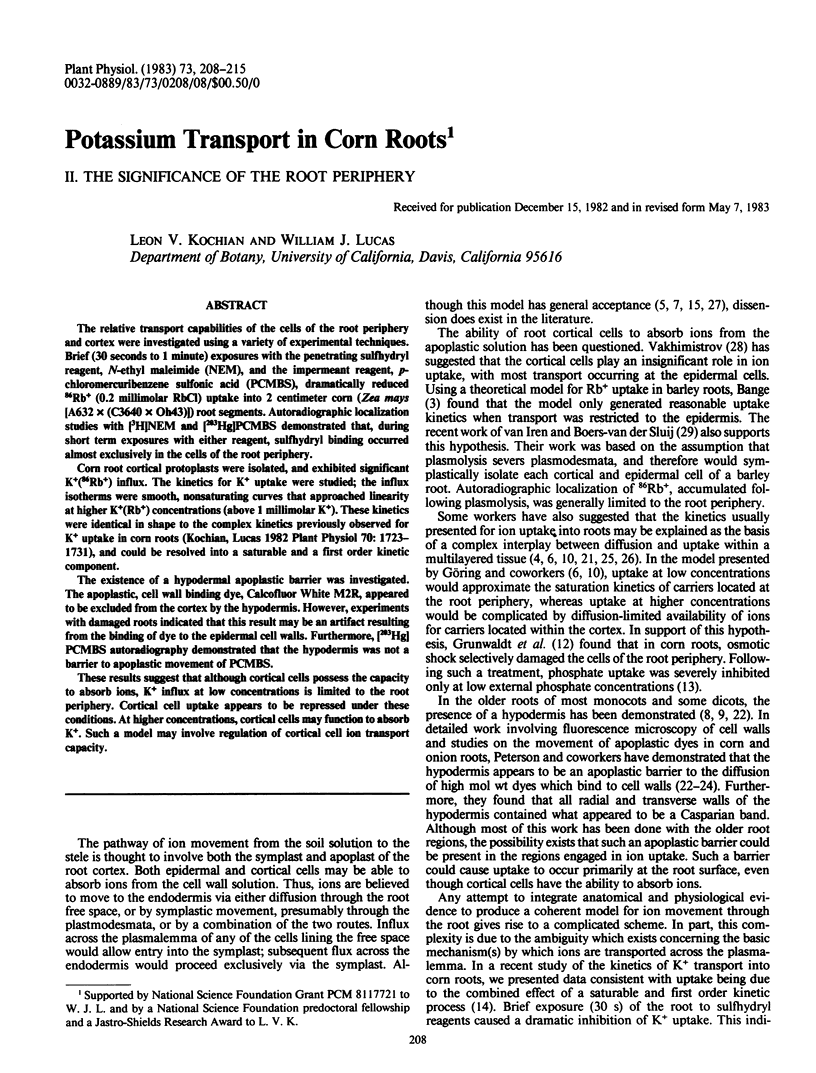
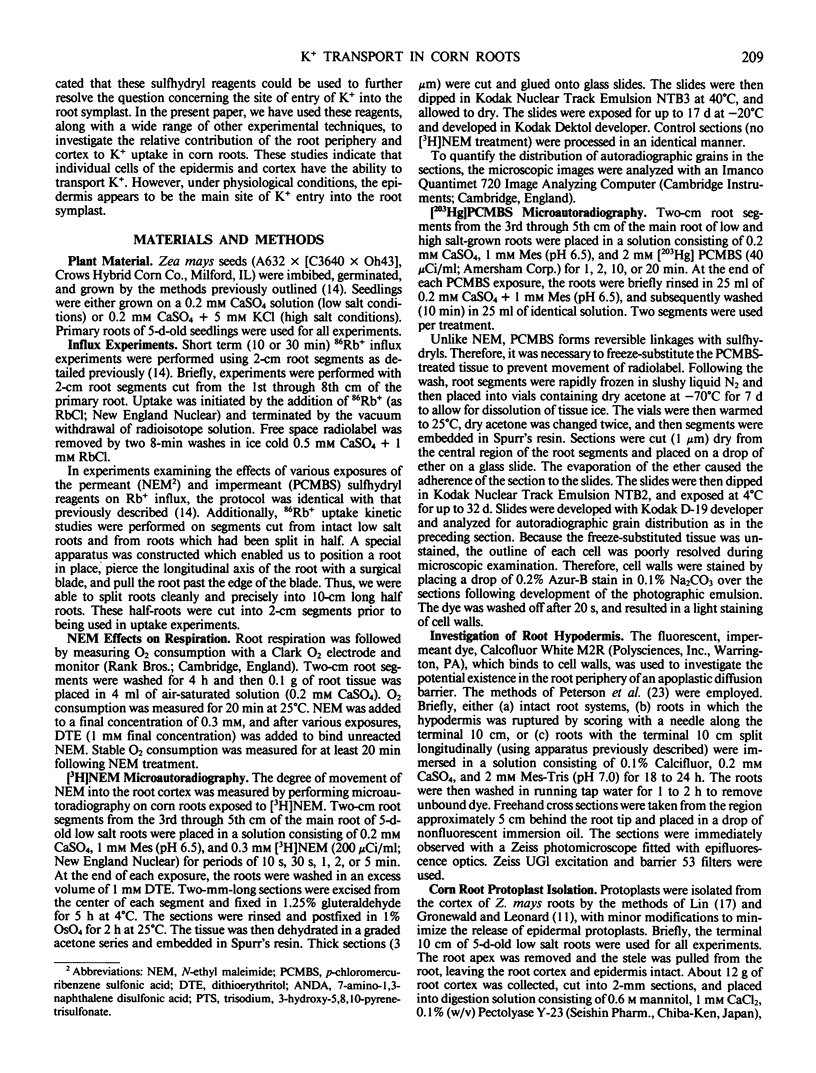
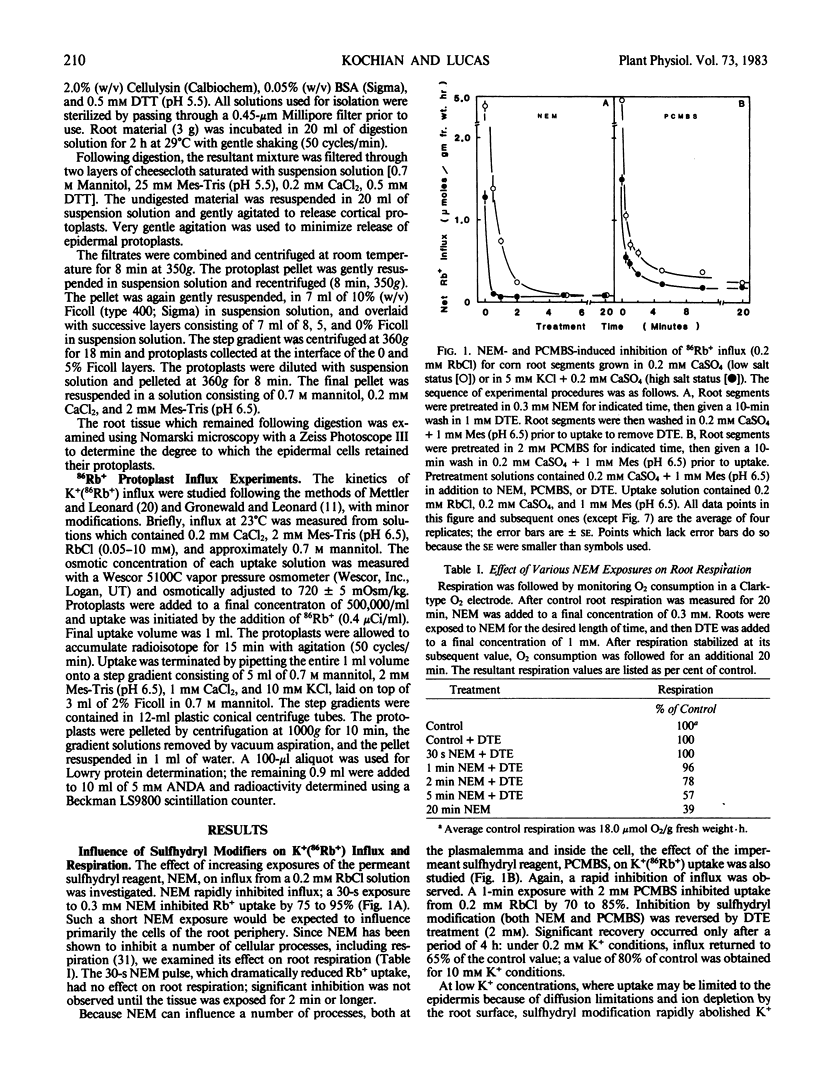
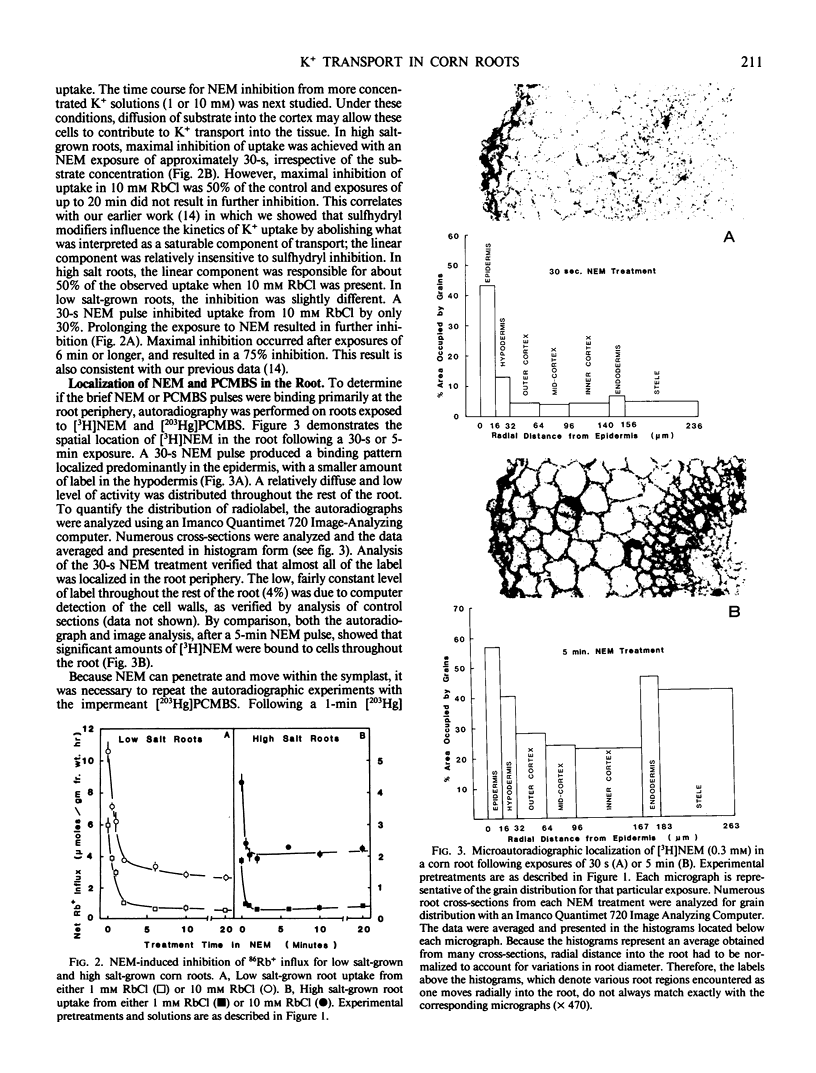
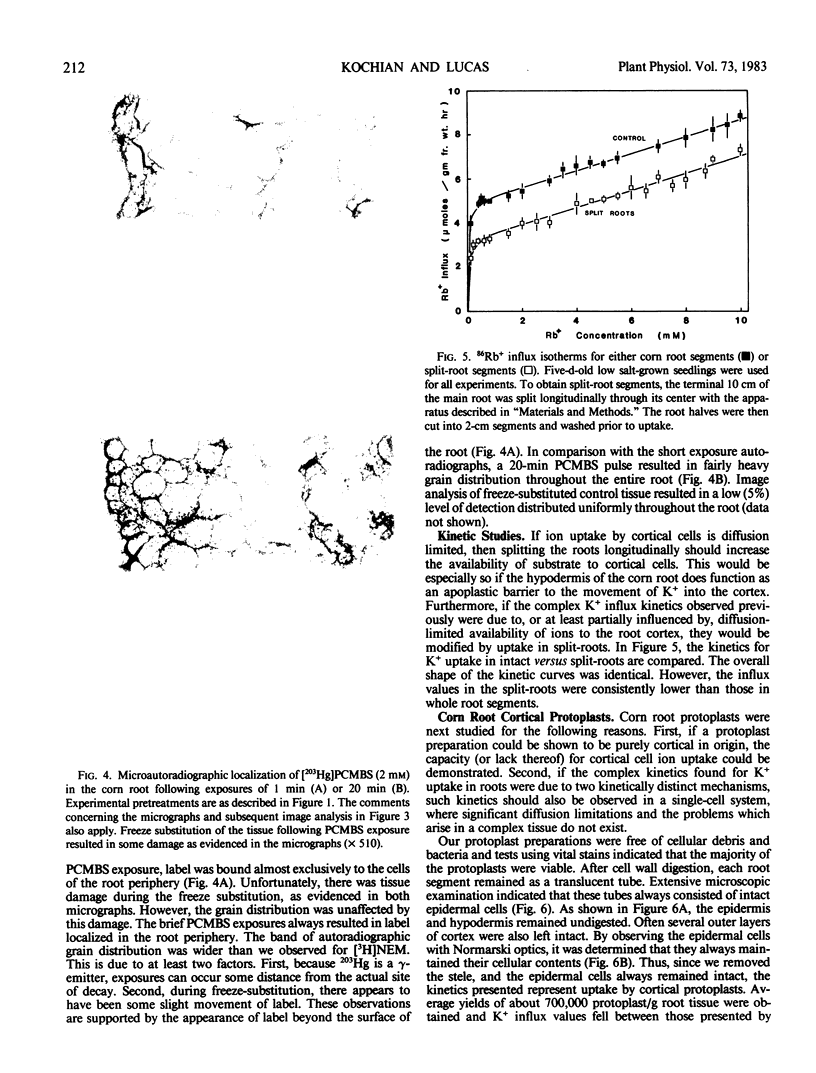
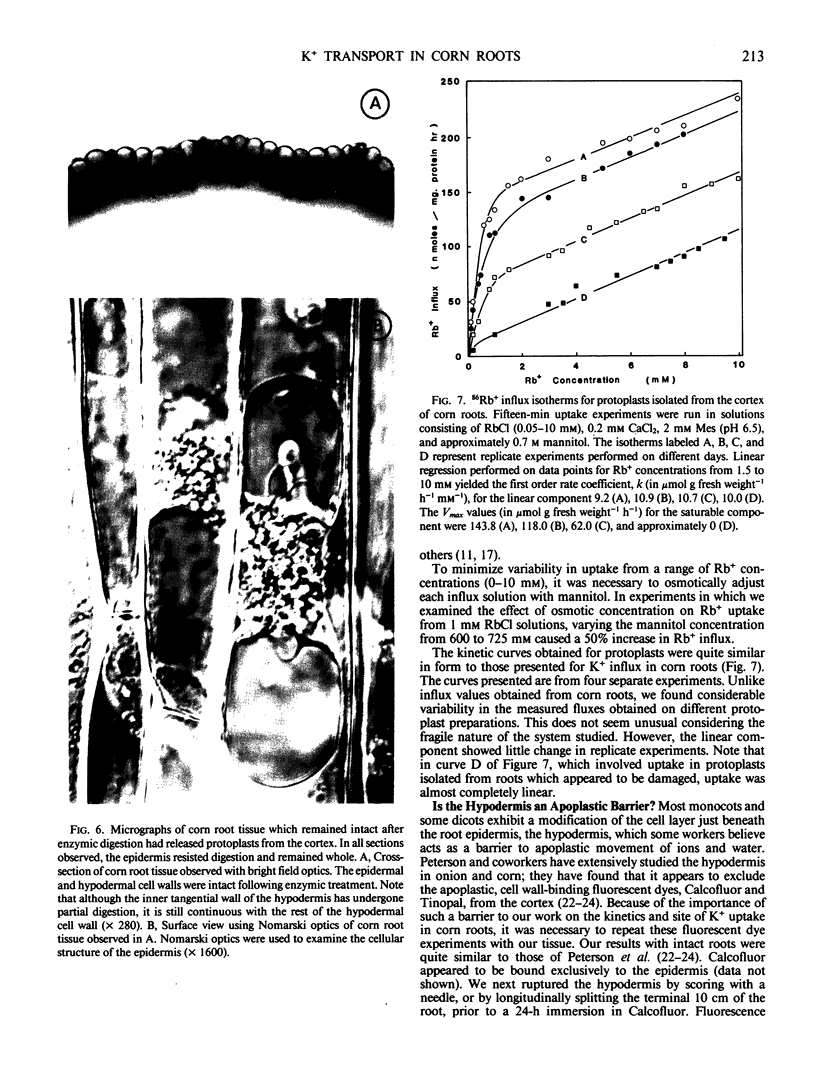
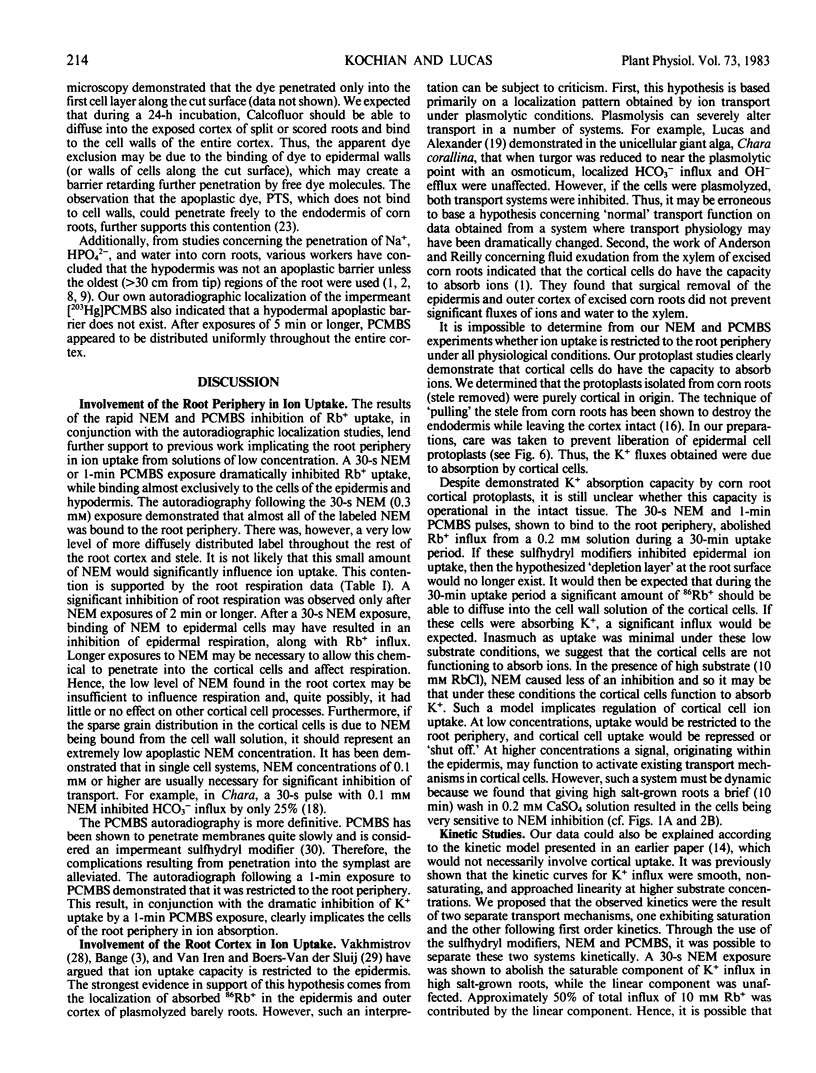
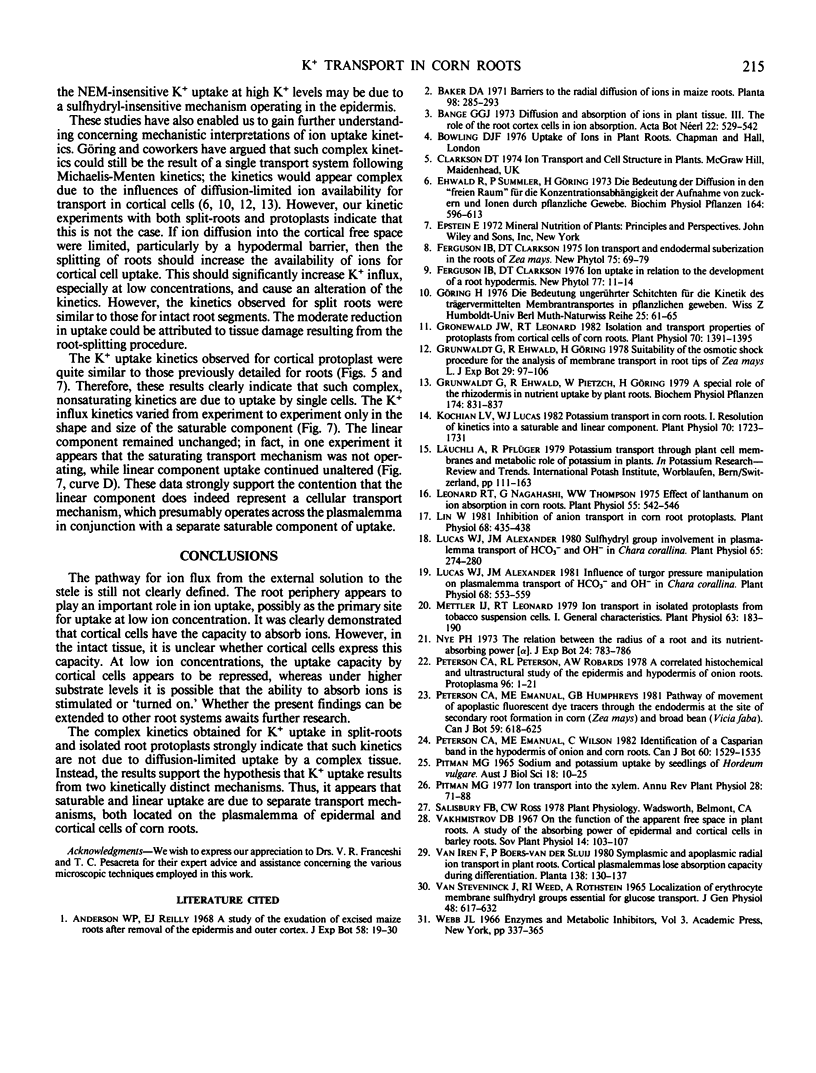
Images in this article
Selected References
These references are in PubMed. This may not be the complete list of references from this article.
- Gronwald J. W., Leonard R. T. Isolation and transport properties of protoplasts from cortical cells of corn roots. Plant Physiol. 1982 Nov;70(5):1391–1395. doi: 10.1104/pp.70.5.1391. [DOI] [PMC free article] [PubMed] [Google Scholar]
- Kochian L. V., Lucas W. J. Potassium transport in corn roots : I. Resolution of kinetics into a saturable and linear component. Plant Physiol. 1982 Dec;70(6):1723–1731. doi: 10.1104/pp.70.6.1723. [DOI] [PMC free article] [PubMed] [Google Scholar]
- Leonard R. T., Nagahashi G., Thomson W. W. Effect of lanthanum on ion absorption in corn roots. Plant Physiol. 1975 Mar;55(3):542–546. doi: 10.1104/pp.55.3.542. [DOI] [PMC free article] [PubMed] [Google Scholar]
- Lin W. Inhibition of anion transport in corn root protoplasts. Plant Physiol. 1981 Aug;68(2):435–438. doi: 10.1104/pp.68.2.435. [DOI] [PMC free article] [PubMed] [Google Scholar]
- Lucas W. J., Alexander J. M. Influence of Turgor Pressure Manipulation on Plasmalemma Transport of HCO(3) and OH in Chara corallina. Plant Physiol. 1981 Sep;68(3):553–559. doi: 10.1104/pp.68.3.553. [DOI] [PMC free article] [PubMed] [Google Scholar]
- Lucas W. J., Alexander J. M. Sulfhydryl Group Involvement in Plasmalemma Transport of HCO(3) and OH in Chara corallina. Plant Physiol. 1980 Feb;65(2):274–280. doi: 10.1104/pp.65.2.274. [DOI] [PMC free article] [PubMed] [Google Scholar]
- Mettler I. J., Leonard R. T. Ion transport in isolated protoplasts from tobacco suspension cells: I. General characteristics. Plant Physiol. 1979 Jan;63(1):183–190. doi: 10.1104/pp.63.1.183. [DOI] [PMC free article] [PubMed] [Google Scholar]
- VANSTEVENINCK J., WEED R. I., ROTHSTEIN A. LOCALIZATION OF ERYTHROCYTE MEMBRANE SULFHYDRYL GROUPS ESSENTIAL FOR GLUCOSE TRANSPORT. J Gen Physiol. 1965 Mar;48:617–632. doi: 10.1085/jgp.48.4.617. [DOI] [PMC free article] [PubMed] [Google Scholar]



